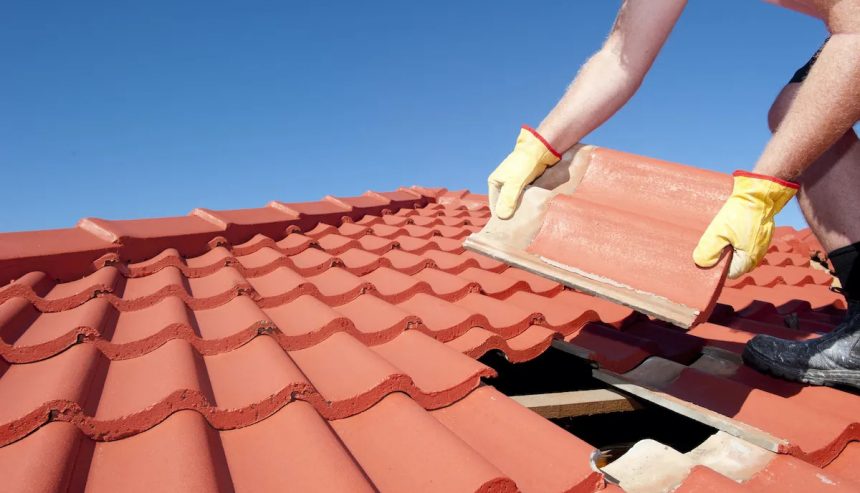Over time, roofs weaken due to exposure to the elements, making roof leaks almost inevitable. Unfortunately, leaking roofs lead to water damage and mold growth if they are not repaired within 24 to 48 hours of the water intrusion. Don’t let a leak in your roof ruin your home!
What To Do When You Have a Roof Leak: Practical Tips and When to Call the Pros
Your roof is your home’s first line of defense against the elements—but over time, even the best roofs wear down. Sun, wind, rain, snow, and seasonal temperature changes all take a toll, slowly weakening roofing materials. Eventually, these vulnerabilities can lead to one of the most frustrating homeowner headaches: a roof leak.
And while a small leak may not seem like a big deal at first, ignoring it can quickly turn into a costly mistake. If not addressed within 24 to 48 hours, roof leaks can cause serious water damage and even lead to dangerous mold growth. The good news? You can take quick action to reduce the damage while you wait for repairs. Here’s how.
Tips to Help Mitigate Roof Leaks
Whether you’re dealing with a slow drip or an all-out water invasion, acting fast can make a big difference. Below are simple but effective ways to reduce damage, identify the issue, and know when it’s time to bring in the professionals.
1. Minimize Interior Water Damage
The first step when you notice a leak is to protect your belongings and prevent further interior damage.
- Clear the area. Move any furniture, electronics, area rugs, or valuables away from the leak as soon as possible. Water damage can happen quickly and permanently ruin sensitive items like electronics and upholstered furniture.
- Use plastic covers. If you’re unable to move large furniture pieces, cover them with plastic tarps or waterproof sheets to shield them from dripping water.
- Grab a bucket. Place a bucket, pot, or large bowl directly under the leak to catch the water. Pro tip: If the water is splashing onto the floor, attach a piece of string or cord to the ceiling where the water is dripping. Water will naturally travel down the string into the bucket, helping to reduce splatter.
- Relieve pressure safely. Sometimes, water will pool above the ceiling, causing the paint or drywall to bulge or bubble. While it may be tempting to ignore it, this can lead to a messy ceiling collapse. Instead, use a small pin or screwdriver to gently puncture the bubble, allowing the water to drain in a controlled manner into a container. Be ready—more water than you expect might come out!
2. Locate and (If Possible) Repair the Leak
Finding the source of the leak can be tricky, but it’s a crucial step if you want to stop the water intrusion.
- Start in the attic. If your home has attic access and it’s safe to enter, take a flashlight and look for signs of moisture. Water stains, discoloration, mold patches, or wet insulation are all telltale signs of a roof leak. Be careful to step only on joists—wet drywall is not safe to walk on.
- Understand water’s path. Water doesn’t always drip straight down. It can travel along beams, rafters, or trusses before it finds an opening and drips into your ceiling or wall. This means the actual point where water enters your home may be several feet away from the visible leak.
- Check common culprits. Roof leaks often occur due to:
- Damaged or missing shingles
- Deteriorated flashing around chimneys or vents
- Cracked vent boots or pipe flashing
- Worn-out moisture barriers
- Clogged gutters or downspouts, causing water to back up onto the roof
- Don’t wait for rain. Inspecting your roof twice a year—in the spring and fall—is a great way to prevent leaks before they start. Clear out leaves and debris from gutters and downspouts regularly to ensure proper drainage.
3. Know When to Call the Experts
While some homeowners are comfortable climbing on the roof or repairing minor leaks themselves, many roof issues require professional attention.
- Roofing work is dangerous. Slippery, sloped surfaces and high elevations can make DIY roof repair a major safety risk. Plus, improper fixes may lead to more extensive damage down the line.
- Leaks are often deceptive. What seems like a small crack may be a symptom of a much larger structural issue, such as rotting wood, poor insulation, or compromised support beams. A trained technician can provide a thorough inspection and long-term solution.
- Don’t delay. The longer you wait to address a leak, the more damage it can do—not just to your home, but to your health. Mold can begin to form in as little as 24 hours in moist conditions. If left unchecked, it can spread quickly, causing respiratory issues and extensive cleanup costs.
Call PuroClean Romeoville for Water Damage Restoration Services
At the end of the day, fast action is key. Whether you’re dealing with an active leak or cleaning up after one, professional help can ensure the damage is fully addressed and your home is safe again.
PuroClean Romeoville specializes in water damage restoration, mold remediation, and emergency response. If you’re located in Romeoville, Joliet, Naperville, or any of the surrounding areas, give us a call.
📞 Call 815.905.2225 for 24/7 emergency service and expert care. Don’t wait until a small leak becomes a major headache—let our team help you restore your home and peace of mind.



 PuroClean of Romeoville
PuroClean of Romeoville